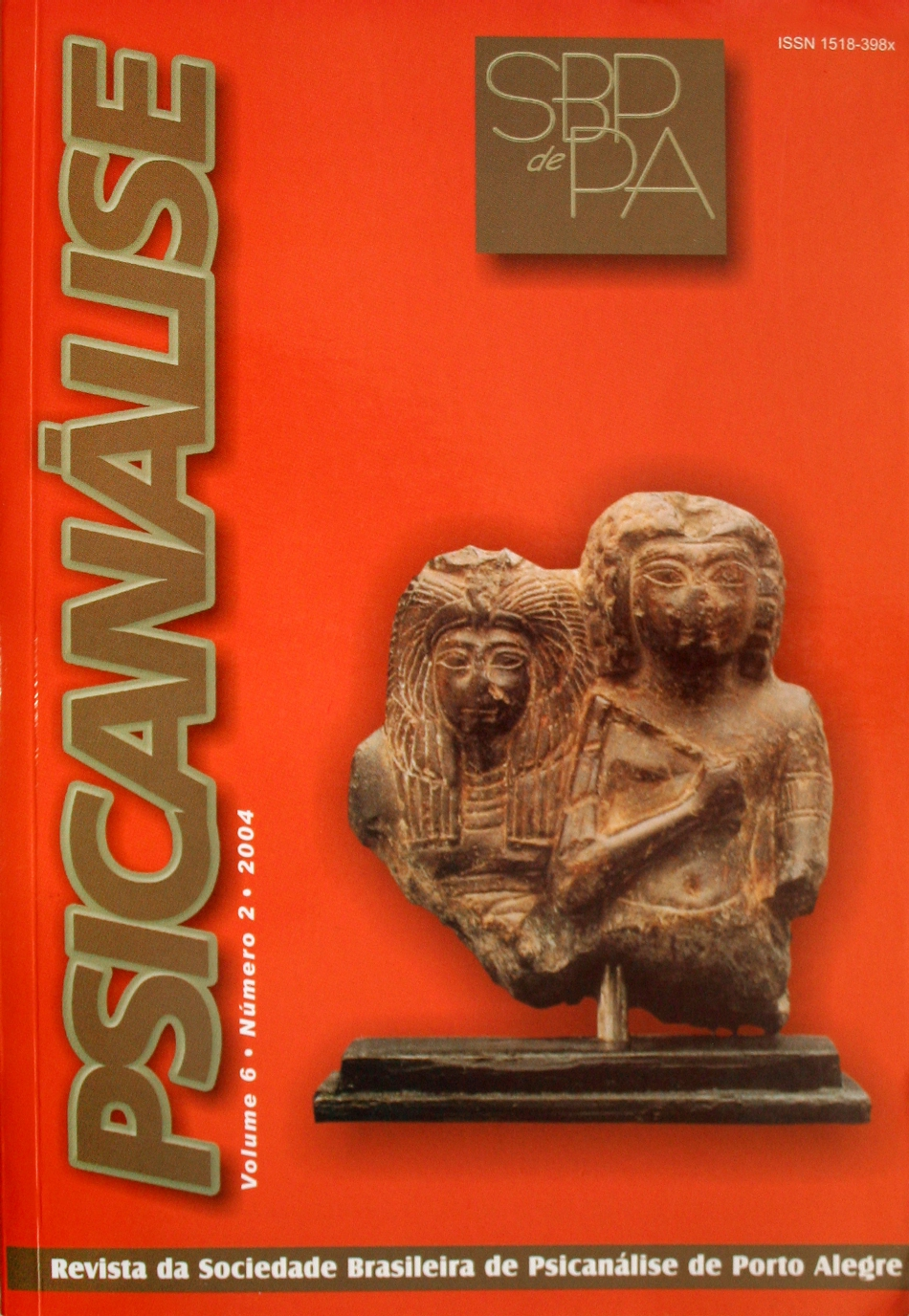Objectivity in the clinical setting
the double work on the evidences
DOI:
https://doi.org/10.60106/rsbppa.v6i2.157Keywords:
Psychoanalytic epistemology, Working through, Interpretation, ParadoxAbstract
It is argued that in the clinical work on the evidences the analyst’s interpretations are conjectures while the analysand keeps at each moment – for worse and for better – the role of epistemic arbiter. This, plus the paradoxes to be traversed on the road to psychic growth, sets the counterinductive-inductive nature of the pattern-realism setting clinical objectivity apart from the linearities implicit in theory-realisms.
Downloads
References
AHUMADA, J.L. (1982). Sobre o delirio de bondade. In: ______. Descobertas e refutaciones: a lógica do método psicanalítico. Rio de Janeiro: Imago, 1999.
______. (1997). A Contra-indução na prática Psicanalítica: aspectos epistêmicos e técnicos. In: ______. Descobertas e refutaciones: a lógica do método psicanalítico. Rio de Janeiro: Imago, 1999.
BION, W.R. (1965). Transformations: from learning to growth. Londres: Heinemann, 1965.
ETCHEGOYEN, R.H. (1999). The fundamentals of Psychoanalytic technique. London: Karnac, 1999.
FREUD, S. (1916-1917). Introductory lectures on Psychoanalysis. In: ______. The standard edition of the complete Psychological works of Sigmund Freud. Londres: The Hogarth Press and the Institute of Psycho-Analysis, 1963. v. 16.
HANLY, C. (1995). On facts and ideas in Psychoanalysis. International journal of Psychoanalysis, London, v. 76, p. 901-908, 1995.
KUHN, T. S. (1974). Second thoughts on paradigms. In: ______. The essential tension: selected studies in scientific tradition and change. Chicago: University of Chicago Press, 1974.
MATTE-BLANCO, I. (1975). The unconscious as infinite sets. Londres: Duckworth, 1975.
______. (1988). Thinking, feeling and being. Londres: Routledge, 1988.
MONEY-KYRLE, R. (1968). Cognitive Development. In: ______. The collected papers of Roger Money-Kyrle. Perthshire: Clunie Press, 1978.
______. (1978). On being a Psychoanalyst. In: ______. The collected papers of Roger Money-Kyrle. Perthshire: Clunie Press, 1978.
PEIRCE, C. (1902). Philosophy and the sciences: a classification. In: BÜCHLER, J. (ed.). Philosophical writings of Peirce. New York: Dover, 1955.
RACKER, E. (1952). Observaciones sobre la contratransferência como instrumento técnico: comunicación preliminar. Revista de Psicoanálisis, Buenos Aires, v. 9, n. 3, p. 342-354, 1952.
RADO, S. (1926). The psychic effect of intoxicants: an attempt to evolve a Psychoanalytical theory of morbid cravings. International journal of Psychoanalysis, London, v. 7, p. 396-413, 1926.
RICHFIELD, J. (1954). An analysis of the concept of insight. The Psychoanalytic quarterly, New York, v. 23, p. 390-408, 1954.
TUSTIN, F. (1981). Autistic states in children. Londres: Routledge, 1981.
Downloads
Published
How to Cite
Issue
Section
License
I attribute the copyrights that belong to me, on this work, to SBPdePA, which may use and publish it by the means it deems appropriate, including on the Internet or in any other computer processing.
















